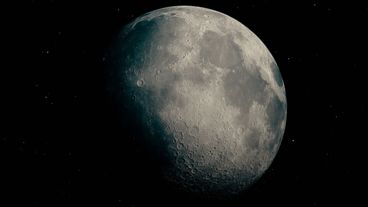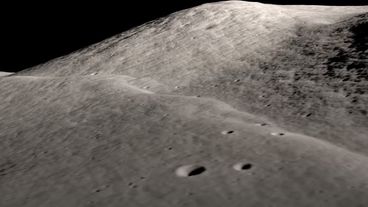uk moon
It’s been half a century since humankind first landed on the moon. When astronaut Neil Armstrong took the first step in 1969, over half a billion people were watching at home for the climax of a Space Race between nations. Twelve people walked on the lunar surface as part of the Apollo missions, and today a new race to return to the moon is underway.
A partial lunar eclipse will be visible tonight over Africa, the Middle East and parts of Europe. Stargazers in the UK should see the moon appear red at around 22:30 BST, provided the skies are clear. The lunar eclipse coincides with the Apollo 11 mission lifting off from Cape Kennedy on this day in 1969. The astronauts landed on the moon four days later.
Unlike a solar eclipse, it’s entirely safe to watch a lunar eclipse with the naked eye.
As Apollo 11 launched from on 16 July 1969, a sea of men watched on from inside NASA's firing room in Florida. Among them was one woman. JoAnn Morgan made her prime-time debut as the first female launch controller during Armstrong, Aldrin and Collins’ historic mission to the moon. But getting there wasn’t easy.
NASA has announced plans for a new mission to the moon which, for the first time in history, will include women. The new mission is named Artemis, the twin sister of Apollo and goddess of the moon, and will mark humankind’s return to the moon after almost fifty years. Women have been visiting space since 1963, but all twelve astronauts who walked on the surface of the moon in the Apollo programme were men.
Monitoring devices placed on the moon by Apollo missions 11, 12, 14, 15, and 16 were able to record seismic activity between 1969 and 1977. Combined with new location data, scientists at the Center for Earth and Planetary Studies at the Smithsonian’s National Air and Space Museum have determined that the moon is experiencing quakes as it cools and shrinks, meaning it’s a tectonically active world.
Billionaire entrepreneur and Amazon founder Jeff Bezos has unveiled a mockup of a new moon lander. Bezos, who is also the founder of rocket company Blue Origin, hopes that ‘Blue Moon’ will help the drive to establish a lunar outpost on the moon within the next five years. If successful, it will be the first time humans have set foot on the moon since 1972.
Humankind has been dreaming of the stars since legends began, and the mystery of space exploration has cemented itself in popular culture. From the pioneering astronauts in the 1950s to our first glimpse of a black hole this year, we continue to make discoveries that were once the stuff of science fiction.
2019 is a bumper year for supermoons, with three occurring in the first three months of the year. Supermoons occur when the moon is both full and as close to the earth as it can be in its orbit. In January 2019, there was a Super Blood Wolf Moon, in February there’s a Super Snow Moon and in March the Super Worm Moon.
A rare “super blood wolf moon” combined three naturally occurring phenomena on January 21st, with a total lunar eclipse, a tint of red from the sun’s rays and at the same time, the moon was at its closest to the earth. People from Brighton to Buenos Aires enjoyed the rare sight, with the next one happening in 2021.





















